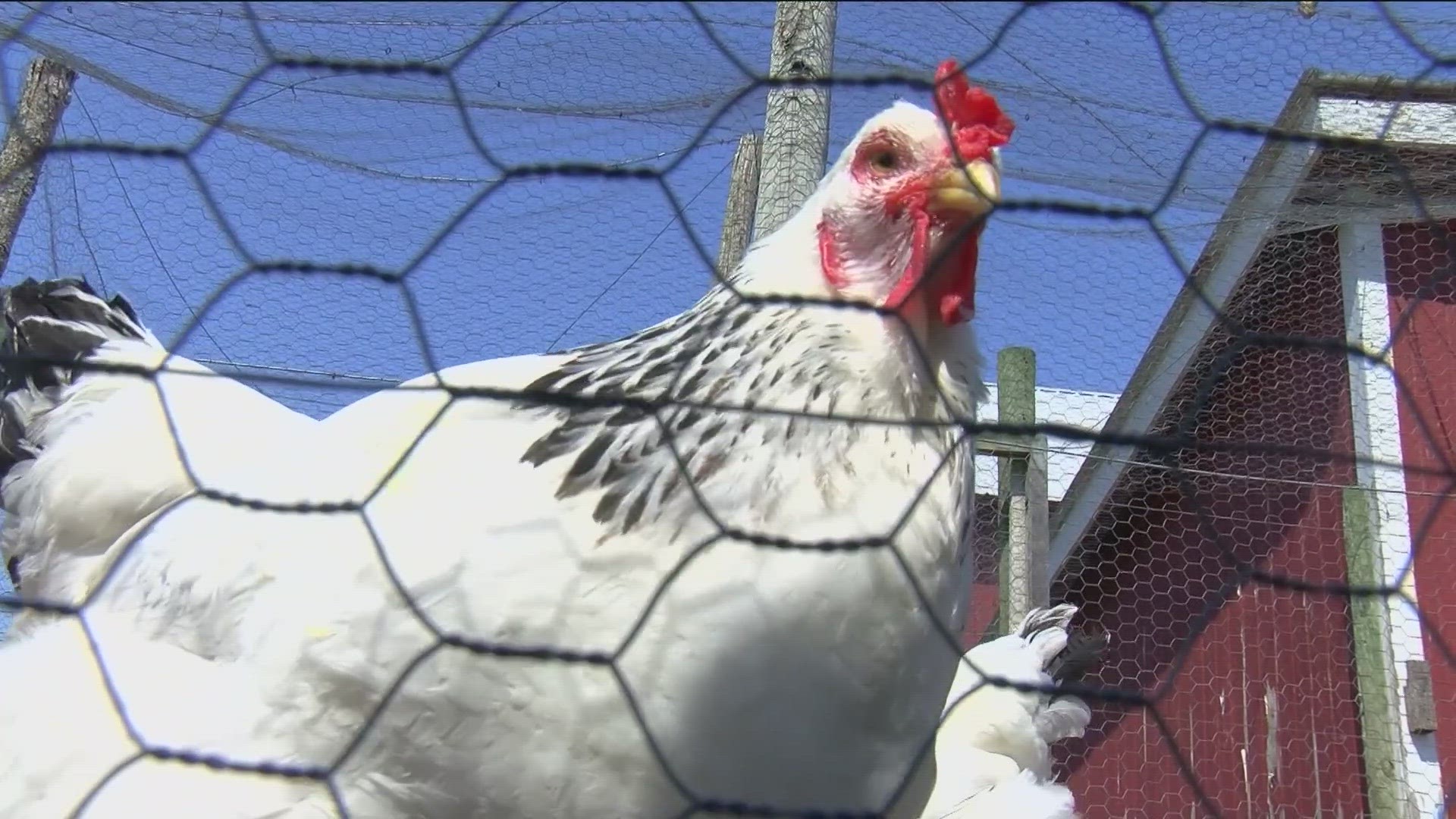BOWLING GREEN, Ohio — Spring is here, Easter is approaching, and that means baby chickens. You might even think about raising your own chickens.
If so you definitely want to make sure you read up on what you’ll need to do to ensure your chickens live comfortable and productive lives.
Raising chickens isn’t extremely difficult but there is a lot to know.
On Saturday, Carter Historic Farm in Bowling Green held a “Chick Tip” session to educate new chicken parents on how to take care of chickens for each stage of their lives.
The cycle starts with the babies. When you buy a baby chick from a store or a farm, they are typically very young - as young as 12 hours old.
It is important to make sure you have a proper set up when you bring your new friend home.
You’ll start with a brooder, which will be any draft free container for the chicks to roam.
Once you have a brooder, you should make sure that you cover the top; typically with chicken wire. As the chick grows older, they hop higher, and you do not want your new chicks to escape.
Now it’s time to think about a heat lamp. The little ones need a heat lamp because they cannot regulate their own temperature until they are adults. A heat lamp should be started at 90° Fahrenheit, and lowered by five degrees each week. After five weeks, you can turn off the lamp as long as the area temperature remains 60° Fahrenheit or higher.
If your chicks are close together in a group, it could mean that they are cold, and if they are avoiding the lamp, the heat may be set too high.
The chicks will need bedding in the brooder. Straw or wood shavings, like the kind you can buy for a hamster, and newspaper are good options for your chicks too. Make sure the layer is not too deep, so your chicks do not get stuck.
Now that your set up is complete, you need to set up a food and water supply.
For food, start with chick starter, then move to grower feed when they are 10 to 18 weeks old. After that time period, your chickens can move to adult pellets or crumbles.
Chickens should always have food and water available. Feeding them twice a day ensures that their food and water stays full. Don’t forget to clean their food and water supply frequently.
When introducing your chick to food and water for the first time – gently hold the chick and lightly dip their beaks into the food and water to they become familiar of the what it is and the location.
After six weeks of having your chicks – they can be introduced to small amounts of table scraps. If this is an approach you choose – make sure you provide chick grit to go along with the scraps to allow them to digest the extra feed. Do not give adult chicken grit to baby chicks.
Good news for those who want to pick the chicks up. Doing this multiple times a day can get them used to be handled at an early stage.
It is not recommended to combine baby chickens with adult chickens because they are territorial animals and will attack the chicks. It is best to wait until the chicks are adult size. Allowing the chicks to see each other before combining them in one enclosure could be a good way to ease the chickens together.
Once your chicks have graduated from the brooder, they move on to the coop. It can vary in size, but the most important factor of a coop is to make sure it keeps your chicken safe and wind-free. A coop should include a roost and nesting boxes for laying eggs.
It shouldn’t be air-tight either. Your chickens will need to breathe.
Flat roosts are better than round. Wood is better than metal. And of course roosts should be kept away from food and water with plenty of room for each chicken you have.
Nesting boxes can be made of almost anything. It’s helpful to put a plastic egg in the box so your chicken gets the idea this is where she is supposed to lay her eggs.
Straw and wood shavings are common flooring for your coop.
A hanging feeder for your chickens help keep feed out of the waste on the ground. Same goes for their water.
Make sure the water container is covered. Chickens might look at it and believe it is a toilet otherwise.
Don’t be skimpy with food. You can feed chickens as much as they want. Pelleted food is simple and can be supplemented with scratch grains.
Chickens even like table scraps. Yes, even chicken.
Remember to store chicken feed in covered containers. You don’t want to invite mice to the party.
Grit is necessary for chickens to digest their food. It is literally small rocks that chickens eat to help crush up food. Remember, they don’t have teeth.
Oyster shell is also important as a source of calcium. It helps them make egg shells.
And if you don’t like to clean, owning chickens may not be for you. Chickens go to the bathroom a lot and you’ll want to remove the waste every so often.
The above tips will get you started (and maybe give you a better idea of the work involved and if you even want to raise chickens at all).
There’s plenty more to know though.
If you think owning chickens might be something you want to do, just remember, it’s a big commitment and chickens are living things that deserve to have a comfortable if you are going to bring them home.
Click here for more information on Carter Historic Farm.
MORE FROM WTOL 11:

